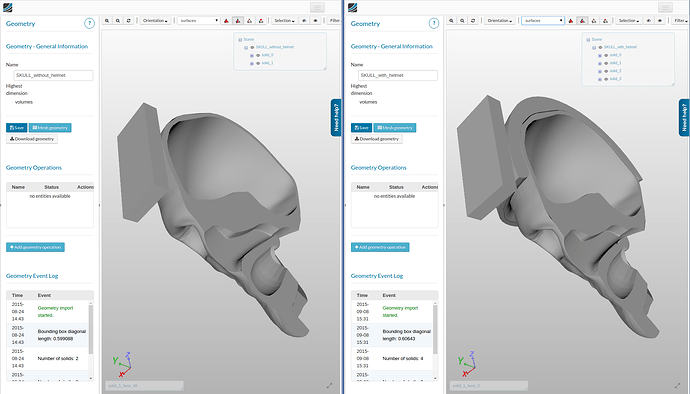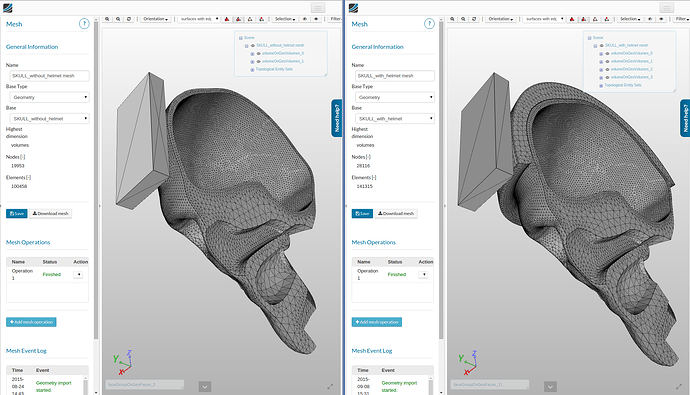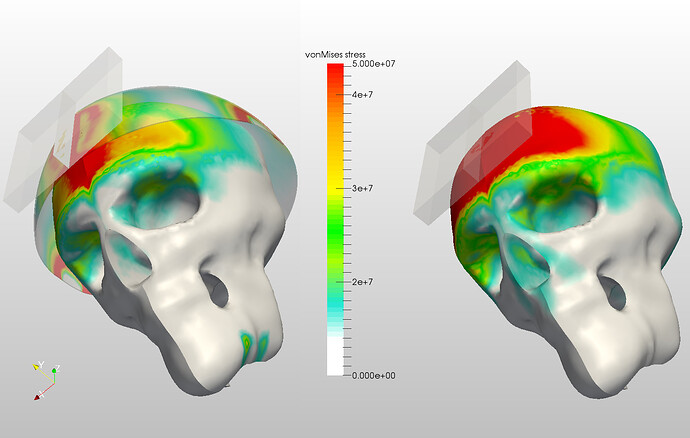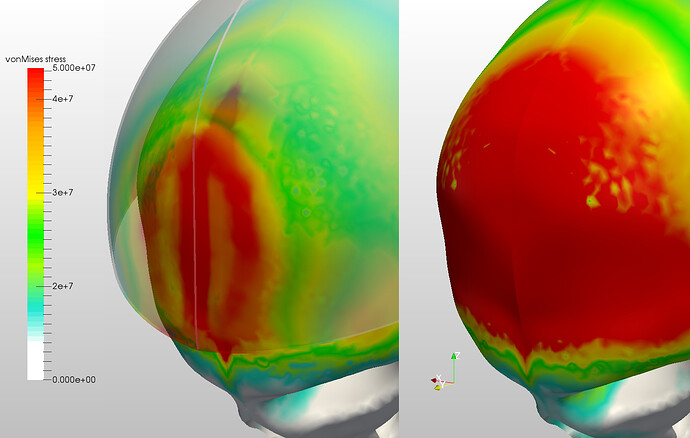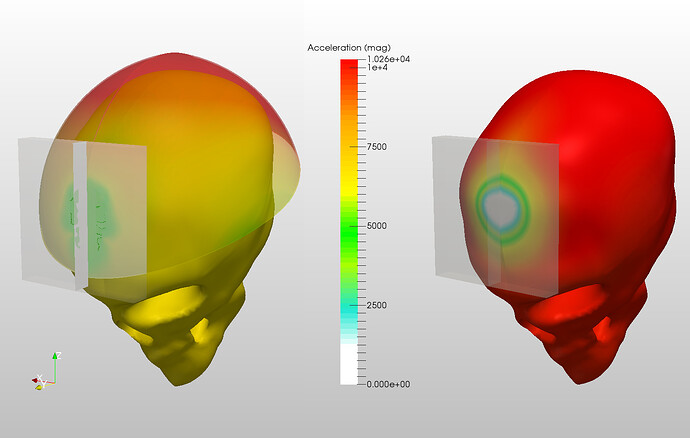Dear SimScalers,
in this weeks spotlight we will have a look at a dynamic nonlinear impact analysis of a human skull with and without helmet by @ahmedhussain18 .
\underline{\textbf{Introduction}}
“Safety First” is “Safety Always.” - Charles M. Hayes
Due to rapid advancements in technology, automotive manufacturers are focusing on speed. On the other hand, they are also aiming for a more secure drive. Different safety providing industries always try to make their product more secure considering extreme conditions. Among them, helmet producing industries are of significant importance. A helmet is a gear worn to protect the head from injuries. The common uses of helmets are in motorsports, cycling, manufacturing sites, etc. In this project, the impact of a human skull with and without helmet has been simulated. The geometry of skull was provided by GrabCAD member BRO1977 and has been edited and cleaned before uploading to the platform. Due to symmetry, only one half of the skull is considered for the analysis. The geometries of the skull with and without helmet are shown in the figure below.
\underline{\textbf{Geometry}}
Format: STEP
Original Model:
Both geometries were meshed using the Tet-dominant option on the SimScale platform. The used geometries as well as the generated meshes are shown in the figures below.
\underline{\textbf{Mesh}}
Type: Tet-Dominant
Mesh information can be found inside the project.
\underline{\textbf{Simulation}}
Type: Dynamic Analysis
Outer shell made of ABS plastic having:
Young’s modulus: 1.7 GPa
Poisson’s ratio: 0.3
Density: 1150 kg/m3
Inner foam made of Polystyrene having:
Young’s modulus: 0.08 GPa
Poisson’s ratio: 0.1
Density: 100 kg/m3
For the impact, nonlinear dynamic analysis was performed. The skull with and without helmet was given an initial velocity of 6.944 m/s (25 km/h). The wall was considered rigid by constraining it in all directions, whereas a symmetry boundary condition was applied to the symmetric side of the skull and helmet. Furthermore, for the case of skull with helmet, the helmet strap was considered as being bonded to the helmet outer shell and skull bottom by using remote force boundary condition. Augmented Lagrange contacts were defined between wall, skull and helmet. The impact was simulated over a specified time frame until it leaves the wall after the impact.
The figures below show the von Mises stress and total nonlinear strain magnitude in skull at highest impact point for both cases. It can be easily seen that there are more strains and stresses in skull without helmet. One of the interesting figures below is the one which shows the cutout of the skull at maximum impact point. This figure clearly shows that the damage to the brain would be more in case of no helmet.
\underline{\textbf{Simulation Details}}
Simulation interval [s]: 0.0045
Initial time step length [s]: 0.00015
Number of computing cores: 8
Residuals:
\underline{\textbf{Post-Processing}}
\underline{\textbf{SimScale Project}}
To look at the simulation setup, please have a look at the project from @ahmedhussain18 :
Dynamic Nonlinear Impact Analysis of Skull with and without Helmet
To copy this project into your workspace, simply follow the instruction given in the picture below.

